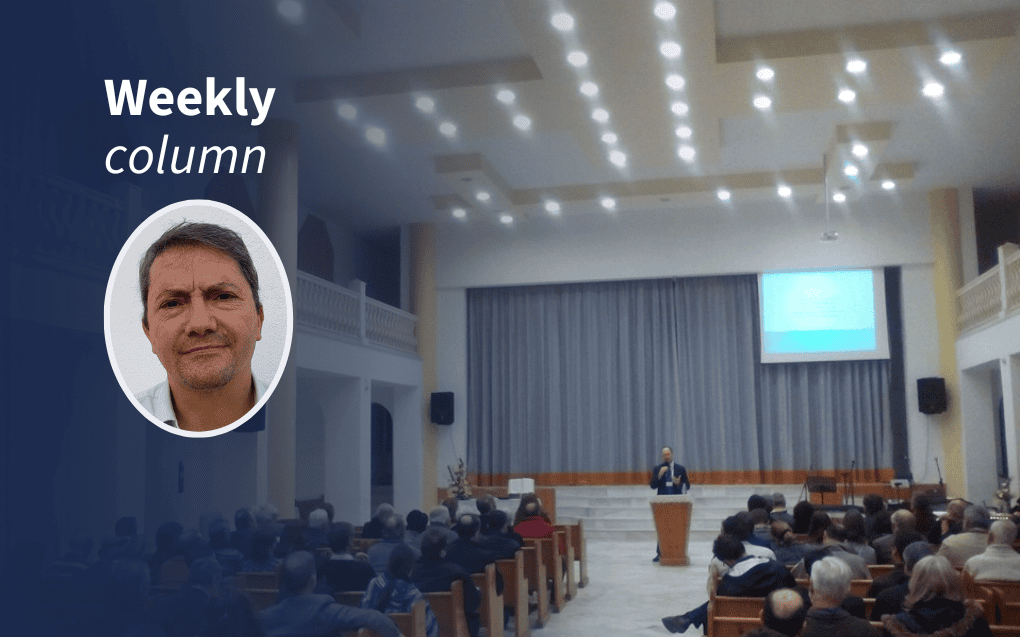Spain's media are afraid of the Evangelical church, what is their agenda?

Photo Canva.com, Facebook, Alianza Evangélica Española
Christian Life
Every four days, a new Evangelical church opens in Madrid. But still, the media are not accustomed to Protestant believers. Jorge Ruiz Ortiz believes there is more behind that.
Spain’s public television network (RTVE) appears to be deeply concerned about the growth of the Evangelical population in the country. On September 22, RTVE’s program Directo al grano (which could be translated as To the Point) featured a short report under the striking headline: “Worrisome Growth of the Evangelical Church in Spain.” The host immediately added, “Promising divine healings, financial blessings, and family restoration. The advance is such that in Madrid, a new Evangelical church opens every four days.”
Then the report was handed over to a female correspondent who, with a visibly worried expression and emphatic gestures, continued: “That’s right. And in Spain there are already more than one and a half million believers…,” going on to list some of the “controversial slogans” these believers allegedly proclaim.
Worship
The opening images showed a well-known Evangelical church in Madrid, followed by a small fire burning in a bowl —perhaps incense, perhaps drugs (it was unclear)— and ending with approximately forty seconds of footage showing a preacher, apparently Pentecostal, preaching outdoors in Girona. The most striking element was that enigmatic image of the fire. Which message was it meant to convey?
As expected, the broadcast caused astonishment among Spain’s Evangelical community. As I mentioned in my previous article, I have serious doubts that we number one and a half million believers, the official figure cited by Evangelical organisations, which is constantly repeated by the Spanish press. If there are around four thousand places of worship in Spain, the math simply doesn’t add up to a million and a half believers.
But in the end, it hardly matters. Let us accept the figure. It helps gain visibility, although such notoriety brings both advantages and disadvantages. Once you are in the public spotlight, that can sometimes become a problem.
Sects
Following a flood of individual and institutional complaints, the following week the programme’s presenter issued an apology “to viewers who may have been offended.” She went on to say: “We wish to clarify that we were referring exclusively to the proliferation of certain pastors with sectarian messages who act independently, and not to the Evangelical Church, whose presence in our country dates back 150 years.”
However, what was truly revealing in her explanation was the admission that what had been aired was merely the intro of a longer report that had already been produced, but which was cancelled on the spot when the producers realised it referred to the “Evangelical Church” as such rather than to “sects or false pastors.” If a one-minute introduction caused such an uproar, what would have happened had the full report been broadcast? It would have been an outright explosion.
What should we make of all this? A communication blunder? Perhaps. Yet airing an explosive introduction and then cancelling the report also raises questions. To some, it might even sound like a veiled threat — and if so, I would hardly know what to say to dissuade them of that notion. It could well be interpreted as a cryptic message along the lines of: “We can expose you whenever we wish. We can destroy you in the media if we want to. Be careful.”
Conspiracy theory
Programmes of this kind, however, are nothing new. I have seen them periodically ever since I became an Evangelical at the age of nineteen, after leaving the Roman Catholic Church. Back then, the number of Evangelicals was not nearly a million and a half. Instead, estimates say there were around 80,000 Evangelicals, all of Spanish origin, as there had not been a large-scale immigration yet.
Even then, the media invariably portrayed us as “Protestant sects,” with particular hostility in so-called “institutional reference” newspapers like El País. We were consistently referred to by the disparaging term evangelistas, clearly to avoid calling us evangélicos—a word carrying far more respectable connotations. At least today, we are called by our proper name.
I vividly remember a Spanish television programme from those years featuring an Argentine Roman Catholic theologian —judging by his accent— who was sympathetic to Evangelicals, along with a Spanish bishop. The theologian criticised the wealth of the Catholic Church and the fact that it had become something “as little Evangelical as a State” (the Vatican), arguing that this was precisely why Evangelical growth was taking place in Latin America. The bishop, far from acknowledging any sense in those words, went on the attack, claiming that Evangelical expansion in Latin America was the work of the CIA. Such was the prevailing discourse at the time. A kind of geopolitical–religious conspiracy theory.
Submission
Today, that narrative is rarely heard. With millions of immigrants from Latin America now living in Spain, it has become much harder to sustain.
The editorial policy of Spain’s major media outlets toward Protestantism has remained largely unchanged. What we are seeing is simply a long-standing communication strategy toward Protestantism in Spain, one that, by all indications, will continue. The public image they have projected for the past 150 years has always been a caricature — portraying Evangelicals as fanatics, eccentrics, or virtually deranged. Or else, as foreigners, or Spaniards sold out to anti-Spanish powers. Yet, whenever a new pope is elected —as has recently been the case— it becomes strikingly clear to what extent the Spanish press —all of it, without exception, including State and left-wing outlets— shows a kind of servile submission to Rome.
Related Articles









